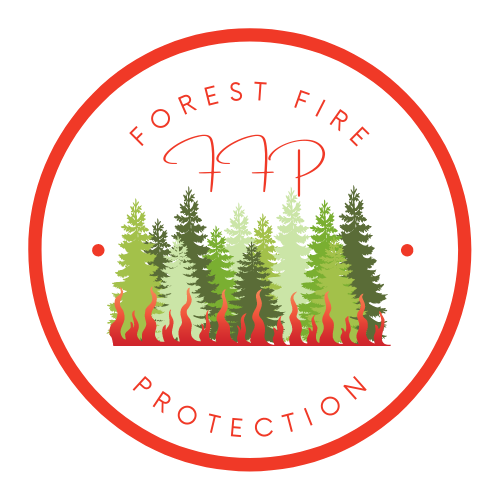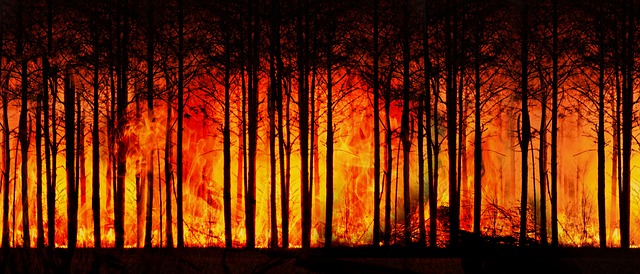The “Forest Fire Self Protection” article is related to the Erasmus+ funded project “Training for self-protection against forest fires in rural areas” with the project number 2021-1-DE02-KA220-ADU-000028430. L4Y Learning For Youth GmbH is the German coordinator, and the BOSEV (Turkey), KMOP (Greece), SPEL (Portugal), OVAR-Forma (Portugal), Cesie (Italy), Growth-Coop (Spain), Citizens in Power (Cyprus) are partners of the project.

European Commission’s support for the production of this content does not constitute an endorsement of the contents, which reflect the views only of the authors, and the Commission cannot be held responsible for any use which may be made of the information contained therein.
Erasmus+
Content
Core of the Project
Context
Objectives
Results
Conclusion
Core of the Project
This project aims primarily to save the lives of rural populations in Mediterranean Europe. By providing training on self-protection against forest fires and the prevention of forest fires.
Context
Forest fires drama is taking hundreds of lives in Mediterranean Europe. Including more than 116 In Portugal in 2017 and 102 in Greece in 2018. The WWF study “Forests Ablaze – Causes and effects of global forest fires” (2017) indicates, “In the Mediterranean region, the average annually burned areas quadrupled since the 1960s”. It identifies Germany with the second-highest incidence of forest fires in Central Europe (PL is the first). The report “Forest Fires – Sparking fire smart policies in the EU” from the European Commission (2018); highlights the limitations of the policies adopted until now. On the one hand, it refers that; “The EU has been funding research of forest fires over last two decades through Framework Programmes and other funding instruments. About 60 research projects, from large-scale integrated projects to more traditional or Marie Skłodowska Curie individual fellowships.
They received a total EU contribution of more than EUR 100 million. ”It refers to “specific areas for improvement” that “There is a tendency to favour fire suppression. With its precise short-term results, over the long-term investment effort required for prevention (including climate-change adaptation), which could improve the effectiveness of wildfire protection programmes”. This report refers to 5 “Current Policy Challenges.” From there, this project aims to address the following 2:
- “Shifting the focus from suppression to prevention and increasing the awareness and preparedness of populations at risk.”
- “Promoting resilient landscapes and communities through integrated fire management,” specifically, “Ensuring communities’ resilience to the danger of forest fires [which] requires an improvement in the knowledge of actual exposure to the risk and the effective response in the event of an emergency.”
Forest Fire Self Protection: Green Deal
The European Green Deal announced; a new EU Forest Strategy for 2021 to ensure effective afforestation and forest preservation and restoration in Europe to reduce the incidence and extent of wildfires. In addition, in March 2021, the European Commission published the booklet “Land-based wildfire prevention – Principles and experiences on managing landscapes, forests, and woodlands for safety and resilience in Europe.” This report refers to the sub-chapter “Planning” that “Populations living near green spaces must become acquainted with the different wildfire risks and associated activities. Since urban areas sometimes stretch into rural areas, wildfires risk affecting an increasing population. More people must thus be made aware of wildfire and its consequences. They need to know acting in case of a fire.”
Objectives
This project aims at answering the identified needs of the reports mentioned above. It will accomplish the following objectives:
i) train people in the rural areas and neighbouring regions on “how to act in case of a fire”;
ii) transfer skills on fire prevention to rural area populations;
iii) consolidate actions to increase the resilience to forest fires in rural areas;
iv) contribute to forest and life preservation;
v) increase the safety of populations by implementing readiness programmes dedicated to civilians. vi) create one training module and materials on self-protection against forest fires and forest fire prevention.
Results
Also, the activities will produce a variety of results that can be defined as follows:
- Firstly,
- 24 good practices collected (result 1)
- Secondly,
- Three training units and resources on introducing forest fire, fire prevention and self-protection against fire. (result 2)
- 80 cooperation protocols (result 2)
- 32 local stakeholders willing to facilitate the training in the rural communities (result 2)
- 80 participants in the on-site pilot- testing and 80 participants in the online pilot testing (result 2)
- One training platform hosts the units and the training materials free of charge and in OER format. Developing high-quality skills and competencies in self-protection in forest fires and prevention of those fires. (result 2)
- Finally,
Forest Fire Self Protection: Conclusion
In conclusion, as partners, we will do our best to help rural area people who live inside a forest when faced with a forest fire.
Also, do not forget to subscribe to our newsletter.
Meanwhile, you can read this article in German, Greek, Turkish, Spanish, Italian, Portuguese, and Indonesian.
Follow us on Facebook and Youtube
Finally, do not hesitate to contact us.
Pic: Pixebay – Geralt

